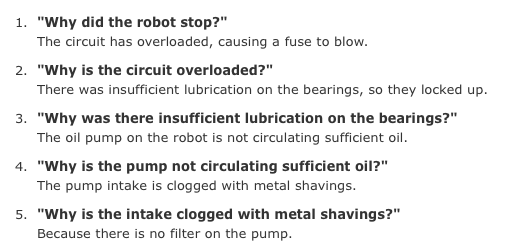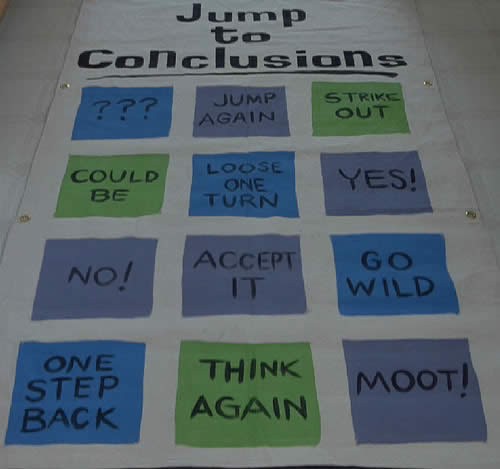Why asking "Why" Can Lead to Better Answers
Why the "5 Whys" technique is recognized as one of the most effective ways to address root cause issues.

This post originally appeared on the MemberMan Blog.
Have you ever been annoyed at a three-year-old asking the dreaded incessant “why why why”?
Maybe the next time a small child peppers you with whys, you might want to cut them some slack.

In fact the “5 Whys” technique is recognized as one of the most effective ways to address root cause issues.
Five Whys technique was developed and popularized by the Toyota Motor Corporation. Now don’t stop reading, it’s not just for upper management of giant corporations. I’m going to bring this home for you. This technique has been used by everyone from Sakichi Toyoda to Elon Musk, but it’s just as applicable to your personal life as it is to your association as it is to Toyota’s assembly line. It works like this:
First, state the problem. For example: “our membership retention is down”.
- Why? Long-time members are not getting as much value out of our membership products and services.
- Why? They’ve used the services and may be looking for something fresh.
- Why? We have not kept ahead of the game in creating new products to keep members educated and engaged.
- Why? We are understaffed?
- Why? Because we can’t find the right person for the job.
That’s a contrived example, but you get the picture. In this case maybe the answer is to hire an outside firm to create new content or repurpose existing content until you can fill the position. For example if you have existing printed or downloadable material, you might be able take this and make it into a course or webinar. Or if you have a course or webinar, you might be able to break it up into PDF articles or worksheets that members can download and take with them.
The point is that asking the Five Whys helped you get from “our member retention is down” to “we can outsource some content creation”. Without going through the process of stripping down to the root cause, you might have arrived at a different conclusion, possibly wasting time and money in the process.
It can be tempting to skip steps in the process. If you find yourself short of the fifth Why, you might have missed something. Go back and try to make the previous Whys more precise.
 For example, if your answer to “why are long-time members not getting as much value out of our membership products and services” is “because they don’t love us anymore”, you’ve skipped a few steps and jumped to a wrong conclusion. It’s unlikely that your members don’t love you anymore. What’s more likely is that their limited resources of time and money are being spent somewhere else. Go back a few steps and ask Why again, until you figure out how to get your members to spend their resources with you again.
For example, if your answer to “why are long-time members not getting as much value out of our membership products and services” is “because they don’t love us anymore”, you’ve skipped a few steps and jumped to a wrong conclusion. It’s unlikely that your members don’t love you anymore. What’s more likely is that their limited resources of time and money are being spent somewhere else. Go back a few steps and ask Why again, until you figure out how to get your members to spend their resources with you again.
The cure for “jumping to conclusions” is to go through a process of asking questions that draw you closer to the root cause. The 5 Whys process is one of the easiest processes to remember and it works on any problem, no matter how small or large.